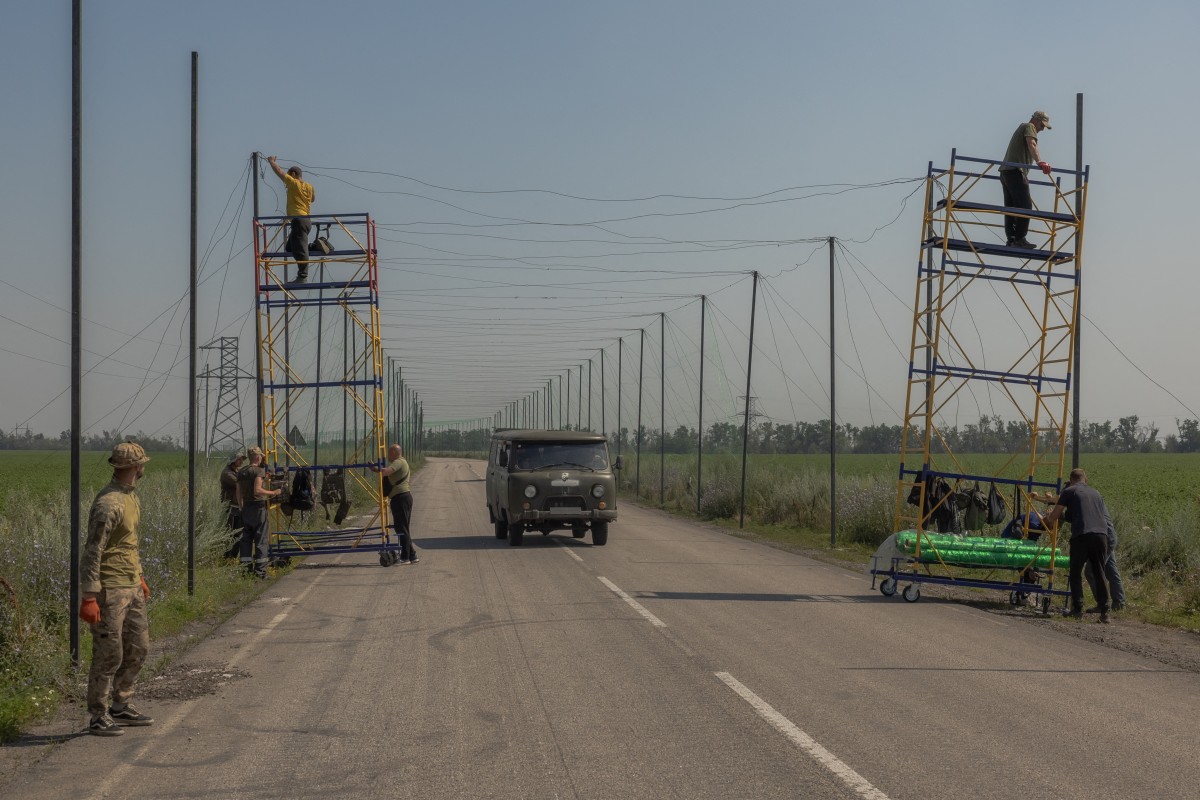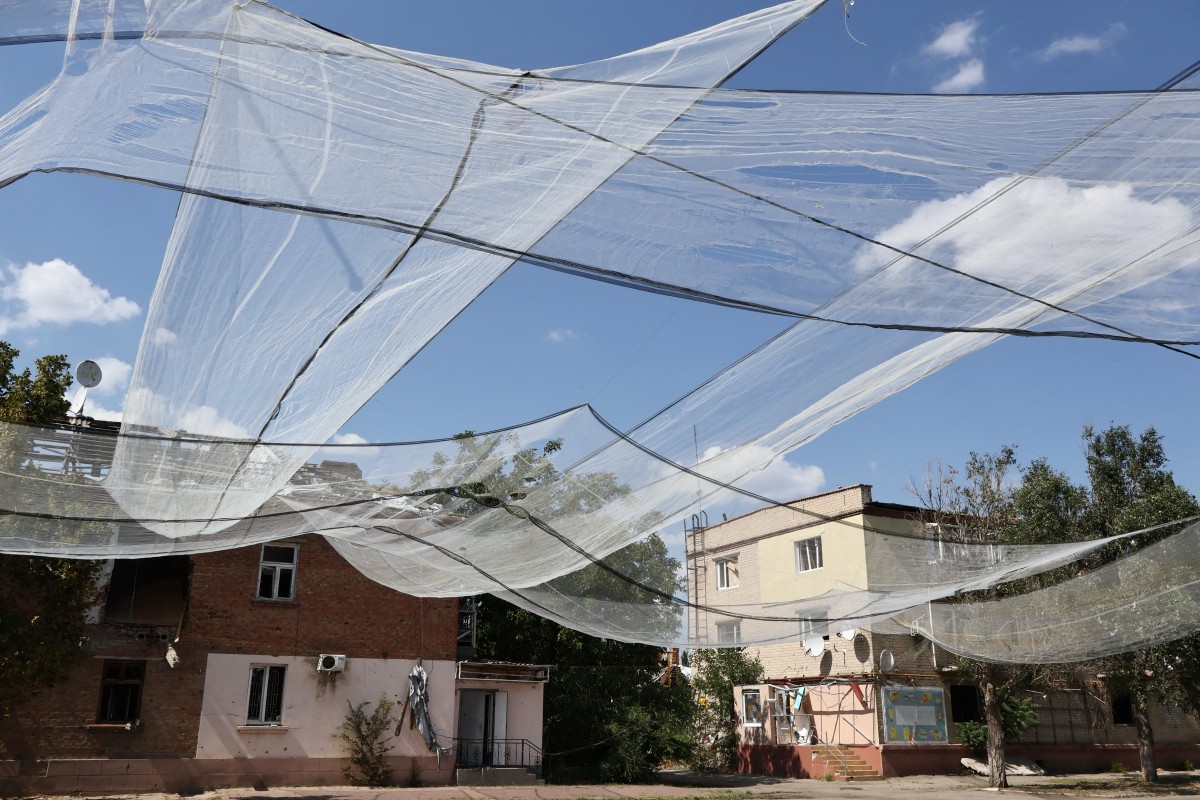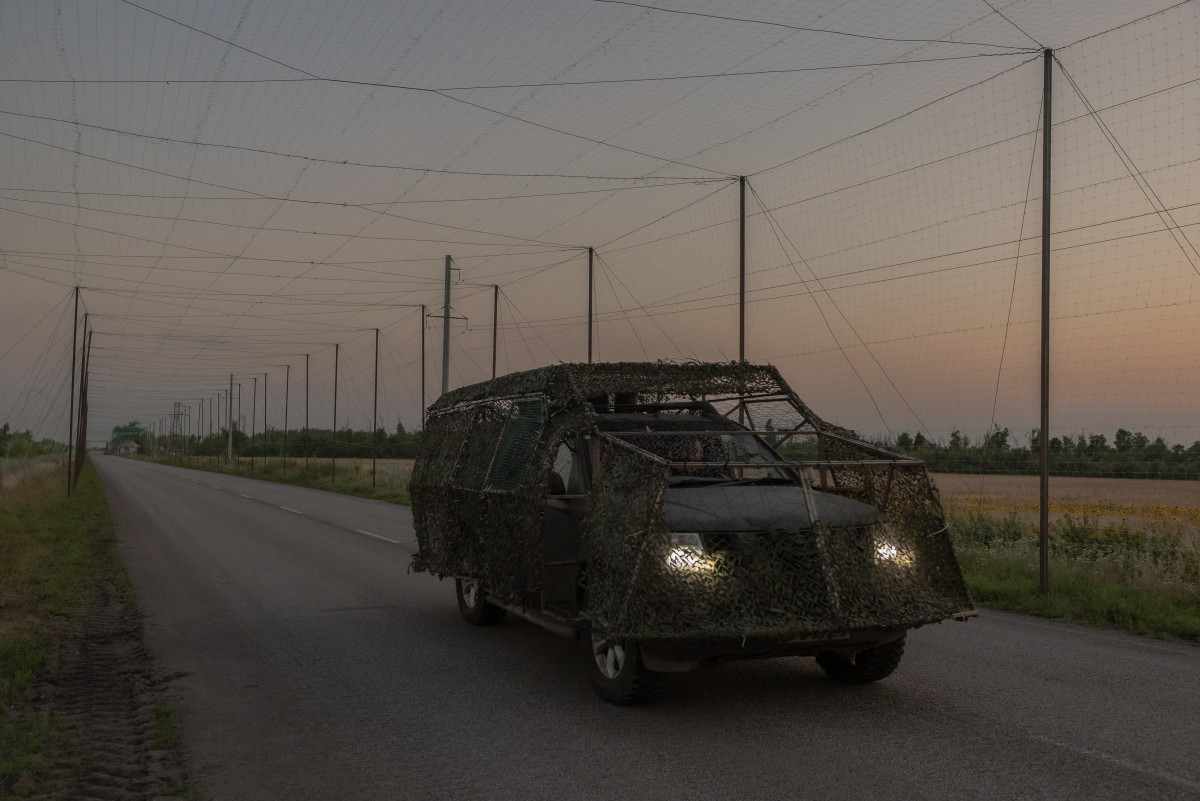
By Agence France-Presse
A ravaged car with its engine destroyed and doors riddled with shrapnel lay on the side of the road near Dobropillia, a sleepy town not far from the front line in eastern Ukraine.
Hit by a small, remote-controlled drone, the mangled chassis was a stark reminder of why Ukraine is hurrying to mount netting over supply routes behind the sprawling front line to thwart Russian aerial attacks.
As Russia’s invasion grinds through its fourth year, Moscow and Kyiv are both menacing each other’s armies with swarms of cheap drones, easily found on the market and rigged with deadly explosives.
AFP reporters saw Ukrainian soldiers installing green nets on four-meter (13-foot) poles spanning kilometers (miles) of road in the eastern Donetsk region, where some of the war’s most intense fighting had taken place.
Twenty-seven-year-old engineering brigade commander Denis said, working under the blazing sun, “When a drone hits the net, it short-circuits and it cannot target vehicles.”

Threat from above
Denis told AFP, “We are shifting into a so-called drone war.”
FPV (first-person view) drones have already seriously wounded a few of his men. Some are armed with shotguns to shoot them down.
The Russian army has also been deploying nets. The Russian defense ministry quoted a soldier with the call sign “Ares” as saying in April, “We weave nets like spiders! For extremely dangerous birds without feathers.”
An earlier article by pro-Kremlin media outlet Izvestia also showed soldiers mounting netting close to the front.

Everyone is in danger
Drones are also a worry for towns and cities. Since early July, the town of Dobropillia, around 20 kilometers (12 miles) from the front line, has become a target for Russian FPV drone attacks.
During a recent visit to the civilian hub—where some 28,000 people lived before the war—AFP journalists saw residents on the streets rush for cover in shops when a drone began buzzing overhead.
When the high-pitched whirring had died down and the threat disappeared, one woman exiting a shelter picked up her shopping bags and glanced upwards, returning to her routine.
Every day, victims come to the small town’s hospital. According to the hospital’s director, Vadym Babkov, the enemy FPVs “spare neither medical workers nor civilians.”
The 60-year-old said, “As the roads are not yet 100-percent covered by nets, his ambulances have to take long detours, reducing the patients’ chances of survival. We are all under threat.”
In Russia’s Belgorod border region, which frequently comes under Ukrainian fire, authorities have retrofitted ambulances with metal anti-drone cages—a technology once reserved for tanks and personnel carrier vehicles.
New habits
Denis told AFP, “Civilians have got used to it.”
Olga, a waitress in a small cafe and mini-market in Dobropillia, has devised her own way to cope with the constant drone threat.
The 45-year-old told AFP, “When I drive and feel that a drone is going to attack me, I open all the windows to avoid glass shards hitting me. The atmosphere in the town had become ‘frightening.’”
The shop next to Olga’s was recently hit by an FPV drone, leaving its owner in a coma. She said, “Now we jump at every gust of wind.”
She added, “The day has passed—thank God. The night has passed and we wake up with all our arms and legs intact—thank God.”
Despite the roads constantly coming under attack, Olga still receives products to sell in her small cafe, since suppliers take detours along routes away from the front. But she doesn’t know for how long.
She told AFP, “Everything hangs in the air now. We’re living day by day.”
